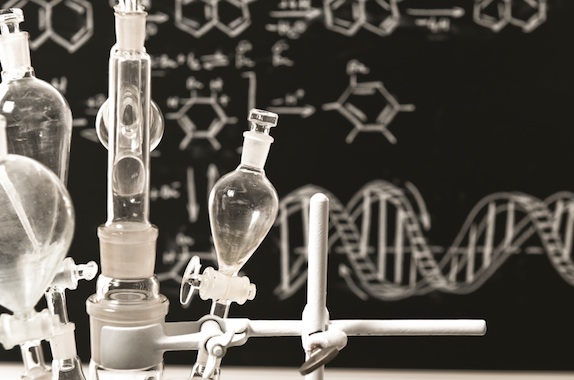Session Chair:
- Ida Chen, The Dow Chemical Company
Session Description:
The session will cover topics in all aspects of fundamentals in transport processes , fluidization, kinetics and reaction engineering. Both experimental and theoretical investigations are welcome. Some suggested topics include detailed chemical kinetic mechanisms, synthesis, kinetics and reactor design for "green" chemistries, catalyst design for chemical processes, and scaling up and down theories and mechanisms.
Schedule:
| PRESENTATION | SPEAKER |
| Computational Design of Catalytic Materials for Fuels and Chemicals Production using Activity Descriptors |
Lars Grabow, University of Houston |
|
Rapid Prediction of Multimetallic Electrocatalysts for CO2 Reduction from First-principles |
Hongliang Xin, Virginia Tech |
| Estimating Physical Properties for Process Development |
Kevin Joback, Molecular Knowledge Systems Inc. |
Abstracts:
Computational Design of Catalytic Materials for Fuels and Chemicals Production using Activity Descriptors
Heterogeneous catalysis is widely considered as one of the key technologies for a sustainable and CO2 neutral energy future, but new catalytic materials need to be discovered in order to achieve this goal. Over the past decades, the discovery of heterogeneous catalysts has been largely based on heuristics, trial-and-error approaches and combinatorial high-throughput experimentation. Recent advances in surface science techniques and density functional theory (DFT) simulations, however, have led to an unprecedented knowledge of the fundamental processes that govern the observed catalytic activity and selectivity. While a complete understanding of the often very complex reaction networks and the dynamically restructuring of the catalyst’s surface is still lacking, it is possible to make qualitative predictions about catalytic performance based on reactivity descriptors. Binding energies of key intermediates or the d-band center of transition metal catalysts are often well-suited to describe catalytic trends and can thereby reduce the complexity of the overall process to just a few variables.1,2 An overview of general computational catalyst design strategies will be presented and illustrated step-by-step on the example of the HCN synthesis reaction from CH4 and NH3 over transition metal surfaces.3 Our current efforts to extend this strategy to catalytic reactions at the significantly more complex interface between metals and metal-oxide supports will be briefly introduced using the prototypical CO oxidation reaction.4
REFERENCES
(1) Abild-Pedersen, F.; Greeley, J.; Studt, F.; Rossmeisl, J.; Munter, T. R.; Moses, P. G.; Skúlason, E.; Bligaard, T.; Nørskov, J. K. Phys. Rev. Lett. 2007, 99, 16104–16105.
(2) Wang, S.; Temel, B.; Shen, J.; Jones, G.; Grabow, L. C.; Studt, F.; Bligaard, T.; Abild-Pedersen, F.; Christensen, C. H.; Nørskov, J. K. Catal. Letters 2010, 141, 370–373.
(3) Grabow, L. C.; Studt, F.; Abild-Pedersen, F.; Petzold, V.; Kleis, J.; Bligaard, T.; Nørskov, J. K. Angew. Chemie Int. Ed. 2011, 50, 4601–4605.
(4) Saavedra, J.; Doan, H. A.; Pursell, C. J.; Grabow, L. C.; Chandler, B. D. Science 2014, 345, 1599–1602.
Rapid Prediction of Multimetallic Electrocatalysts for CO2 Reduction from First-principles
With dwindling fossil fuels and rising concern about their impact on climate, renewable energies have attracted a considerable amount of attention since last decade. It is urgent to develop cost effective energy storage technologies that can store and release excess power to fill in the gaps when the sun is not shining or the wind is not blowing. Electrochemical reduction of CO2, if coupled with hydrogen (H2) from photocatalytic water splitting, provides a promising solution for the utilization of the abundant greenhouse gas in the Earth’s atmosphere and the intermittent electrical energy from solar panels and wind turbines for fuels and chemicals that are traditionally derived from petroleum. Unfortunately, there are currently no catalysts capable of carrying out this chemistry with both high activity and selectivity. Copper (Cu) is, arguably, the only known metal that produces appreciable amounts of hydrocarbons and oxygenates, although at high overpotentials (~1.0 V). Cu is, by no means, optimal. It is a really exciting field to find improved catalysts for electrochemical reduction of CO2, ideally to hydrocarbons or oxygenates. Tailoring the local chemical reactivity of Cu sites by alloying with other metal atoms could potentially reduce the energy loss for CO2 reduction and enhance the Faraday efficiency to liquid fuels (e.g., ethanol). While the traditional trial-and-error method for catalyst development usually relies on chemical intuition and is time consuming, recent emergence of a descriptor-based materials design approach has significantly improved this and allows the discovery of more efficient catalysts from first-principles. In this talk, I will discuss our mechanistic studies of CO2 reduction to C2 species and develop a rapid screening approach that explore the wide geometrical and chemical phase space of multimetallic alloys with lower potential loss and higher selectivity to liquid fuels.
Estimating Physical Properties for Process Development
To develop a new chemical process we invariably need values for physical properties: vapor pressures for separation design; heat capacities for thermal systems design; diffusion coefficients to analyze mass transfer; viscosities to select pumps. Very often experimental values for these physical properties are not available and the expense of laboratory measurements cannot be justified. Fortunately there are numerous computational methods that can provide adequate estimates of these needed physical property values.
We will discuss various methods for estimating physical properties. We will focus on their applicability and accuracy as well as how and when to use these methods. We will also show how a focus on physical properties provides a systematic, thorough, and rapid means to evaluate process alternatives. The development of a process for the removal of carbon dioxide from a flue gas stream will be used as an example throughout the presentation.

